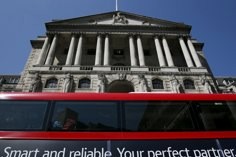
UK house prices expected to rise 6pc in 2016
Growth surpasses forecasts this year amid scant supply and low interest rates
British house price are likely to rise more slowly next year, at 4 to 6 per cent, compared with growth of nearly 10 per cent in the past 12 months, mortgage lender Halifax forecast.
Last year, Halifax said house prices would rise by 3 to 5 per cent this year. But its own figures have shown growth of more than twice that in the year to October.
“House prices look expensive compared to incomes but valuations are supported by the low levels of property for sale, low levels of housebuilding and exceptionally low interest rates,” Halifax housing economist Martin Ellis said.

MORE REPORT: UK house prices rise faster than expected in April
Other data showed a slower rate of increase than Halifax’s numbers. The Office for National Statistics has reported a 6.1 per cent gain for the year to September.
Economists polled recently predicted on average that house prices would rise 4.3 per cent next year and 3.9 per cent in 2017.
Bank of England chief economist Andy Haldane last month called the British housing market “broken”, blaming a long-term failure of construction to keep up with demand.
Last year, the central bank restricted high loan-to-income mortgages for residential purchases. It is looking now at whether to recommend curbs on “buy-to-let” mortgages favoured by small property investors.
But it has stopped short of deeming the price rises a major threat to financial stability.

